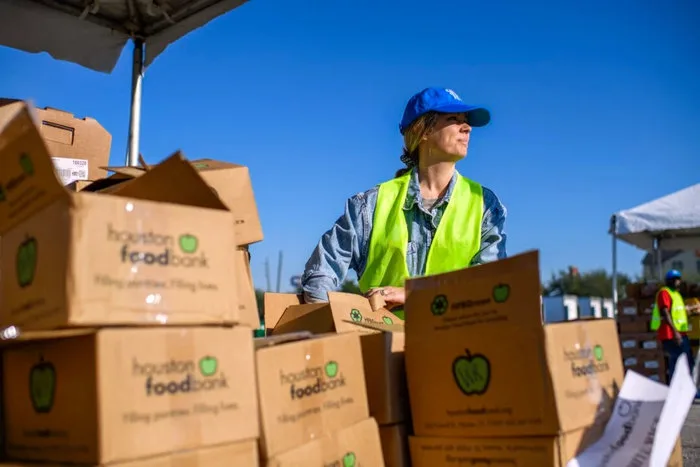By Zachary Stieber
Food stamp recipients will receive up to 65 percent of their normal benefits in November, Trump administration officials said in court filings on Nov. 5.
That’s an increase from up to 50 percent that was outlined in previous filings, as well as a memorandum sent to states.
The U.S. Department of Agriculture (USDA) said in the Nov. 4 memorandum that it was reducing the maximum benefit households participating in the Supplemental Nutrition Assistance Program (SNAP) can receive to 50 percent of the current maximum allotment.
“Since that time, USDA performed further analysis and determined that the maximum allotments need only be reduced by 35%, instead of 50%, to deplete the SNAP contingency fund, and has issued a revised memorandum and allotment tables to State agencies,” Patrick Penn, a USDA deputy undersecretary, told the federal court in Rhode Island.
The revised memo, distributed on Nov. 5, said that maximum benefits will be 65 percent of the typical maximum benefits.
Trump administration lawyers in a separate filing described what happened as an error and said it worked to issue accurate information as soon as the error was discovered.
U.S. District Judge John McConnell Jr., who is overseeing the case, recently ordered the government to at least partially fund SNAP for November amid the government shutdown by utilizing a contingency fund established by Congress.
The USDA had previously said it would not tap the fund after determining it was reserved for emergencies such as hurricanes.
In response to the ruling, the administration said it would use the $4.6 billion remaining in the fund to partially fund SNAP, which in a normal month costs $8.5 billion to $9 billion.
Officials chose not to fully fund the program in part because a separate tranche of money identified as a possible source by plaintiffs in the case, derived from tariff revenues, must be reserved for child nutrition programs, they said.
Sharon Parrott, president of the Center on Budget and Policy Priorities and a former budget official, told the court later on Nov. 5 that a 50 percent cut in benefits would mean the USDA was only spending $3 billion, and that spending the full $4.6 billion would result in a 43 percent cut on average.
The city of Baltimore, Maryland, and other plaintiffs filed Parrott’s estimate as they urged the judge to force the administration to fully fund November benefits. They have argued that officials have acted arbitrarily and capriciously in choosing partial funding and noted that officials have said it could take months for some recipients to receive their November benefits.
“Because it is now clear that due to Defendants’ course of conduct, and by their own admission, undertaking a partial payment plan at this point cannot meet the Court’s directives or adequately remedy the harm Plaintiffs are suffering, the Court should grant Plaintiffs’ motion to enforce and should temporarily enjoin and compel Defendants to release the withheld funding, in its entirety, for November SNAP benefits,” they stated in their motion.
A hearing on the motion is slated to take place on Nov. 6.
In their response to the motion, government lawyers said that “given Congress’s failure to appropriate sufficient funds for November SNAP benefits and USDA’s adherence to both the statute and its own regulations regarding partial benefits, it cannot be arbitrary and capricious for USDA to decline to raid an entirely different program, to the tune of billions of dollars, in the mere hope that Congress will fix the ensuing deficit through the general appropriations process.”
They also said it would be “unprecedented and unworkable for a court to mandate that USDA complete such a transfer.”






